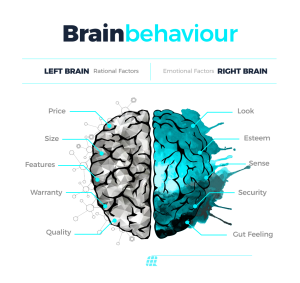Up until now, we have focused on building your brand. Now it’s time to move onto the next step: Managing your brand once you have built it.
Congratulations! You have graduated! But the biggest challenges lie ahead.
That’s because building your brand was hard. But managing it so that it continually grows, constantly expands, and forever finds new customers, new fans, and new profit potential is the BIG TIME.
So let’s get started. First, a vision exercise …
For the next two minutes, close your eyes and think about what you want your business to look like five years in the future. I’ll wait here.
…
Did you do it? What did you see? Ideally, you saw a future where:
- Your day-to-day operations practically ran themselves.
- Every action you took as the brand leader promoted and expanded your brand.
- Your brand was well-known, well-respected, and most of all trusted.
Okay, that’s the ideal. That’s what we are striving to achieve … and not just sooner or later, either. You want your business to look like this as soon as possible and to continue to resemble this utopian vision for as long as your business is operating.
The good news is that everything you imagined can be achieved. In fact, it’s within reach. All it takes is effective brand management.
Brand Management: Identify Systems
As a new business owner, you probably are doing ten million things a day just to keep your business afloat. That’s perfectly normal.
But your goal needs to be a business that practically runs itself so that you can focus on building your brand and growing your business. So how can you achieve that goal?
The first step is to identify the things you do all the time. Maybe they are daily tasks. Or possibly they are monthly responsibilities. Whatever the timetable, identify the brand-related actions that are on repeat within your business ops.
Now break each of these actions into their own systems. And then create a specific set of standards you can use to operate each task efficiently. Once you can get these tasks running efficiently, you already are on the path to a self-running business.
Eventually, your business growth rate will allow you to then delegate these tasks to others. And that frees you up even more for “big picture” thinking and actions.
Systemization of routine tasks eventually will lead to increased quality control, better services, and an improved customer experience. And that will make building your brand even easier.
Brand Management: Subsystems
We’ve talked about the macro of running your day to day. Now let’s discuss the micro.
Each task you identified above actually is a series of smaller tasks. These are known as subsystems.
Now all you need to do is take these subsystems and apply the same standardization to each that you did your larger systems. Once you can ensure that the quality and consistency of these smaller tasks is just as high as the standards you applied to your overall systems, you have built the foundation for successful brand growth.
Brand Management: Measurable Objectives
You can only judge something if you can measure it. For example, let’s say you never tracked your daily sales (Unimaginable, I know. But this is just a hypothetical!).
If you don’t know what you sold yesterday, or last week, or last month, how can you set goals for sales growth next year? Impossible.
That’s why it is critical to track and measure everything your business does within reason. Not just macro things like daily sales and weekly revenues, but smaller things like how long it takes you to perform specific tasks, or the overall efficiency of Promotion A versus Promotion B.
Metrics are essential to growing any business. They give us not only the data we need to understand where our business has been, but the tools we can use to plan for where we want it to go.
Your business needs to have measurable objectives that is based on empirical data. That means hard and fast numbers that don’t lie, can’t be manipulated, and don’t care whether you agree with them or not.
Once you create measurement systems, then you need to apply these metrics according to significant time frames: Daily, weekly, monthly, quarterly, and annually.
Each smaller subset helps build the larger. And each allows you as the brand manager the ability to make specific, strategic decisions to “move the needle” where you want it to go.
Then you can set targets that allow you to work towards specific goals. All of which will help not only measure your business but also improve it.
Managing your brand is often a bigger challenge than simply launching it. To be successful in your industry, you need to be diligent in understanding how your business fits in relation to the competition and what you can do to improve your standing.
Need more ideas for managing your brand? Lytron Design can help. Call, email, or contact us today.





No comment yet, add your voice below!